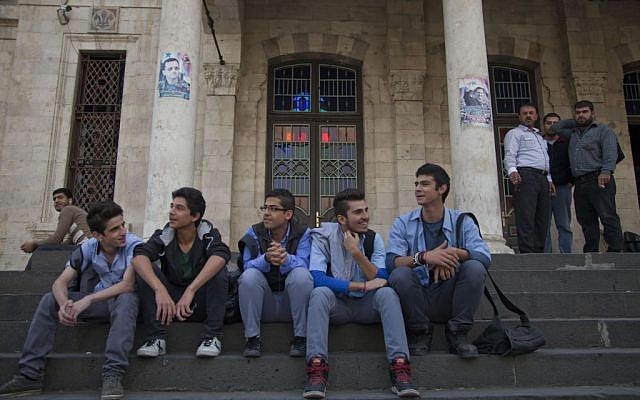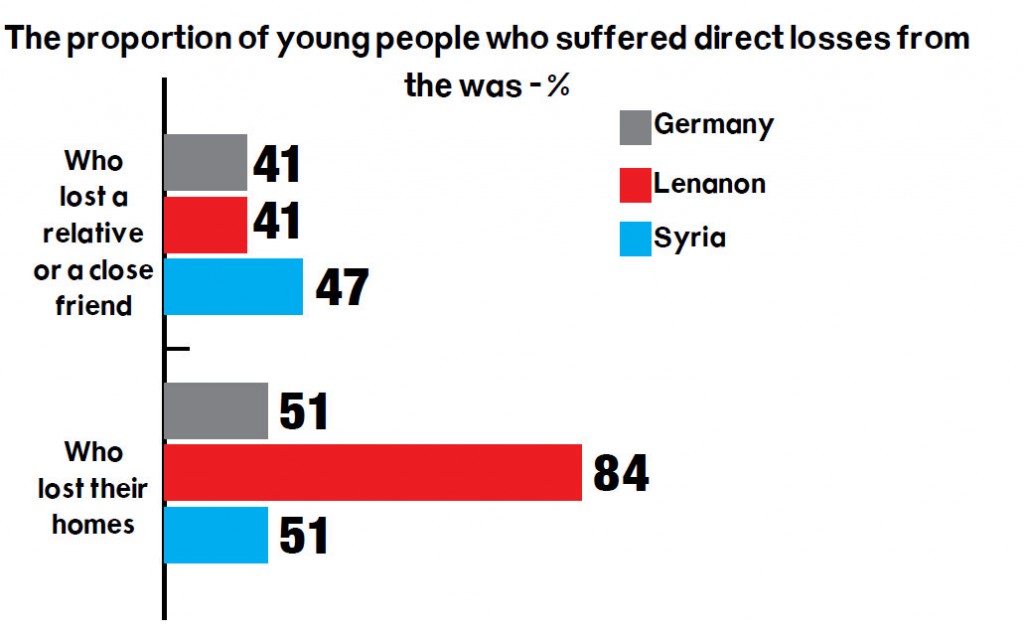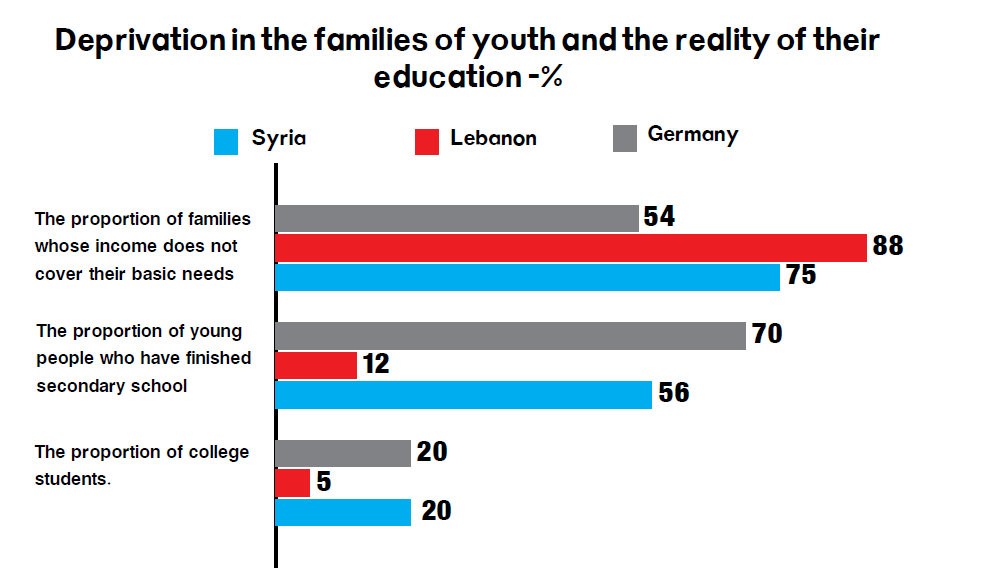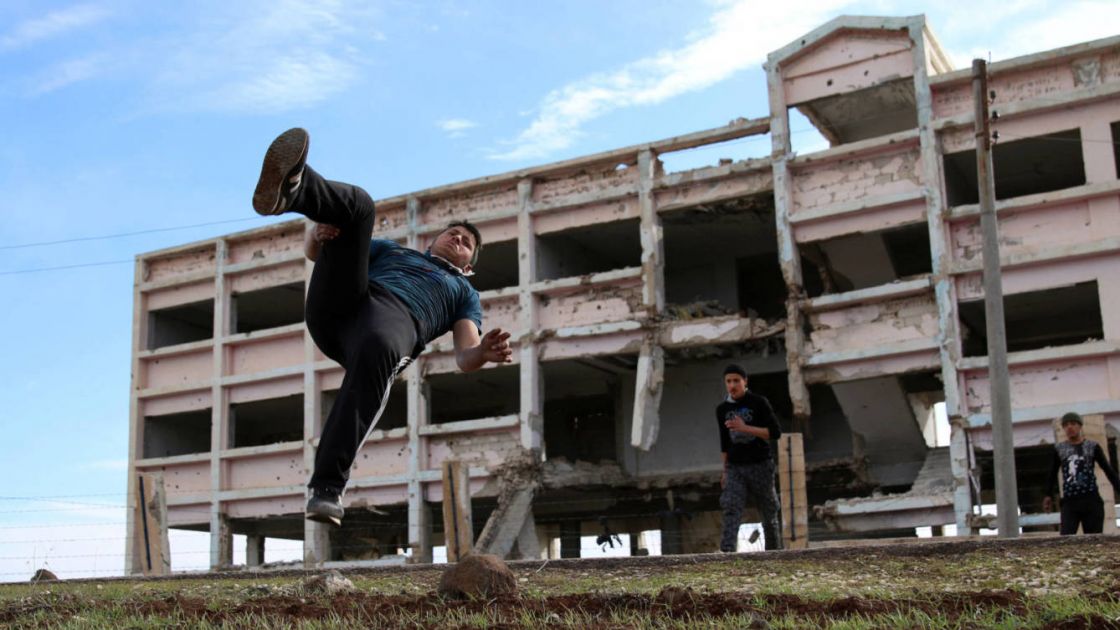- Articles
- Posted
“A Wasted Decade” ; Life Events of the Syrian Youth and the Future Losses.
Ten years have passed since the Syrian crisis; a whole decade whose effects will not be over in one more decade even if the war has ended and the losses have stopped from today! Economic losses continue, and social losses, despite being difficult to be measured, some of their indicators say that the greatest losses are in the wide social effects that will continue to appear in the future. While the situation of the youth and children today is difficult and dim, their future burdens will be greater, as they will pay twice the price!
Kassioun have looked through the highlights of two international reports that relied on collecting data directly from Syrians about their day-to-day life events. The first one concentrates on the youth and was conducted by the ICRC and a Swiss Research Center IPSOS entitled: Young Syrians Project Report. While the second report is made by World Vision and concentrates on children and the future economic effects of the losses in health and education: “Too High a Price to Pay: The Cost of Conflict for Syria’s Children”.
The Situation of the Youth Today between Syria, Lebanon, and Germany
The report of the ICRC concentrates on the Syrian youth between 18 – 25 years old. The report issued on Feb 24, 2021 relies on extensive interviews that included samples from the youth inside Syria by nearly 800 respondents, with a sample distributed by region and gender, excluding the governorates of Idlib, al-Raqqa, Deir ez-Zor and al-Quneitra. In addition to 400 interviews with refugees in Lebanon, and 200 interviews with Syrian refugees in Germany. The survey took place during the period between the end of 2020 and the beginning of 2021. It can be deduced from the general features of the information given by the Syrian youth about their situation that the Syrian youth, wherever they were, are not in a good condition, but of course the level and type of the crises differ. Generally, Syrian refugees in the region and in Lebanon in particular are in the worst situation, while in Germany, their situation in terms of basic neccesities is definitely better, although they have their own different problems. On the other hand, the situation in Syria is bad in so many respects, but it is relatively better in others.

Who lost a Loved One and a Home?
Wherever you looked, you will notice a similar proportion, as a big proportion of the youth in Syria, Lebanon and Germany have been directly affected by the violence of the ongoing war in the country. 47% of Syrians inside Syria have lost a loved one, or a relative at least during the last decade, while 41% of the Syrian youth in Lebanon and Germany have also experienced direct loss to their loved ones as a result of the war. Loss is not only in death, as a large proportion of the youth surveyed have lost their contact completely with a relative or a close friend for reasons related to war. The proportion reaches two-thirds of Syrians surveyed in Syria, and 55% of Syrians surveyed in Lebanon and Germany. Half of Syrians in Syria and Germany have also lost their homes and 51% of the youth were forced to leave their homes as a result of war. However, the proportion between Syrian refugees in Lebanon is higher, as 84% of the surveyed youth have reported losing their homes in Syria and fleeing from them to Lebanon.

How do they live and adapt to Deprivation?
Most of the families of the Syrian youth are families of wage workers, as 71% of those young people have obtained their incomes during the last 12 months from fixed or intermittent work wages, while 16% have reported having no source of income. A high proportion of young people have also reported a deficiency in securing basic needs in their families. 88% of Syrians in Lebanon and 75% of families surveyed in Syria live on an income that is less than the basic needs, and it is noteworthy that the proportion in Germany is not much better, as about 54% of Syrian youth there have pointed out that they live with their families on an income level that is less than the basic needs. As for the strategies adopted in the adaption of basic needs with low income, most of the people surveyed have recorded their adoption of a change in the quality of food to less expensive ingredients, and they constitute no less than 85% of Syrian youth whether in Syria, Lebanon, or Germany.
This strategy is the most common strategy to adapt with poverty, but other strategies have also been prevalent amongst the families of the youth surveyed: whether child labour, taking them out of school, or marriage of young girls, etc. The proportion of families that relied on child labour of those who are under the age of 18 to contribute to the income of the family is also high. The highest proportion is in Lebanon, as 43% of the families of the youth surveyed depend on the income brought by their children, versus 17% of people surveyed in Syria. What is noteworthy, however, is that 24% of the youth surveyed in Germany have pointed out that their families also rely on this mechanism. The third strategy that grabs attention is: taking children out of school, as people surveyed in Lebanon have reprted the highest proportion: 60%. The proportion is also striking in Germany, as 25% of families took their children out of school to face poverty.

Between Education and Work
The survey records the education level of the youth to show that the situation of Syrians in Lebanon is also the worst. Practically, 84% of the Syrian youth have not finished secondary school, and 5% of them are illiterate! On the other hand, 56% of the Syrian youth in Syria have finished secondary school, and 20% of them are pursuing tertiary education. The proportion of those who completed their secondary school in Germany have increased to 70%, while the proportion of alumni matches the proportion in Damascus at about 20%. The unemployment rate amongst young people who are seeking employment is increasing in varying amounts, for example: it is difficult for young women to find a stable work and the unemployment rate amongst surveyed females is 53%, versus 13% amongst males. In Lebanon, most of young women are housewives at a rate of 59%, while most Syrian young women in Germany are students at a rate of 60%, versus 29% of male students. Moreover, most of young men in Germany are primarily toilers, and 64% of them work in temporary or permanent jobs, on the other hand, the proportion of young female workers in Germany is no more than 25%.

Is Syria the Home Country?
The survey asks the Syrian youth about their mental state and their wishes. 58% of them on average are described as depressed, and 54% suffer from sleep disorders! Finally, the survey asks the Syrian youth abroad if they still consider Syria their home country; 60% of the Syrian youth in Germany said that they still consider Syria their home country, while 40% said that Germany is their home country, and only 9% believe that they will be in Syria in the next 5 years. Whereas, 80% of the Syrian youth in Lebanon still consider Syria as their home country, 20% consider Lebanon their home country, 30% of them see themselves in Syria in the next five years, and 33% of them believe that they will be in Europe. As for the Syrian youth in Syria, 60% of them still believe they will stay in Syria in the next five years, while 40% of them believe they could be in Europe or the neighboring countries.
Economic Losses for the Present and the Future
Economic losses of $ 1.2 trillion:
The report of World Vision points out to the highest number of losses of the Syrian war, as it reaches $1,2 trillion to date according to the estimates of the report. This is based on the assumption that the Syrian average growth – at a rate of approximately 6% – continued during the last lost decade, and our loss from losing this economic growth only has exceeded $ 10000 billion.Additional losses of $ 1.4 trillion:
However, this is not everything, as the report indicates that even if the war has stopped today, the effects will keep the losses recorded until 2035, that is, in 15 years of reconstruction, the restoration of the above-mentioned will consume economic growth and will make the total costs close to $ 1.4 trillion.$ 1.7 trillion as a result of the decline in education and healthcare
Beyond that, the severe consequences of the decline in education and health status will carry additional future effects, which the report tries to approximate with numbers. It says: they will add to the losses between $ 120 – 260 billion, bringing the total losses to $ 1.7 trillion. This is based on the fact that the current decline in human capital whether due to the deterioration of the level of education or healthcare, will lead to an average loss of 1.5 % annually of the total national growth in the future. This is because the youth and children of today will be less able to give tomorrow, while much will be required from them.Aid that does not exceed 1.6 % of the Disaster
In addition to all these huge losses, the report points out to the paradox represented in the amount of humanitarian aid, which did not exceed $ 19 billion during the last ten years, and it only constitutes less than 1.6 % of economic losses! It is an approach that cannot continue.Syrian children have lost 13 years from their lives:
In contrast, losses in life expectancy for children born in Syria have become 13 years, as the average life expectancy of the child has declined by more than a decade. Besides, the ten years of war we have fought have already been lost from the lives of the children of Syria today.


